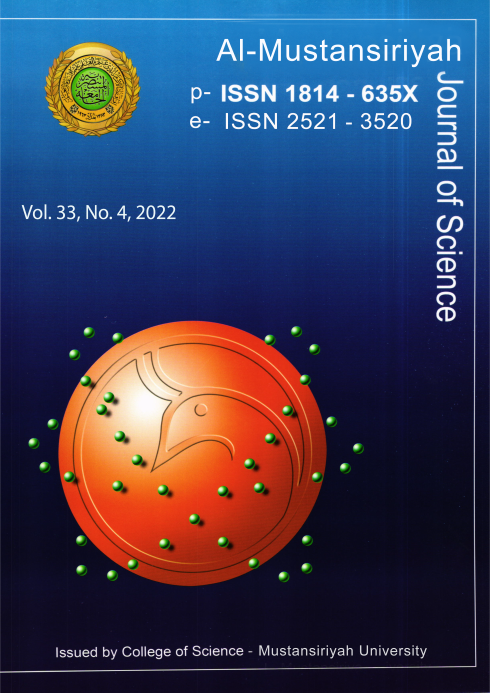Severe Meteorological Factors Affecting Civil Aviation Flights at Iraqi Airports
DOI:
https://doi.org/10.23851/mjs.v33i4.1179Keywords:
Civil Aviation, Flight, Fog, Dust stormAbstract
By studying the impact of severe weather conditions on civil aviation flights at Iraqi international airports, data were obtained from the General Authority for Meteorology and Seismic Monitoring, the Iraqi Civil Aviation Authority, and Iraqi Airways, as daily data for Baghdad International Airport, Erbil Airport, Sulaymaniyah Airport, Najaf Airport, and Basra Airport.
The frequency of occurrence of thunderstorms, dust storms, fog, and snow was calculated and analyzed depending on the extent of horizontal visibility to determine the hours of air closure and aircraft movement at all airports of the study.
This paper also discussed the temperature and its effect on the take-off and landing processes, the results showed that Baghdad International Airport was greatly affected by the occurrence of fog, followed by the airports of Erbil and Sulaymaniyah and their impact by the occurrence of thunderstorms and snow, while both Najaf Airport and Basra International Airport were greatly affected by dust storms.
Downloads
References
Coffel, E., & Horton, R. (2015). Climate change and the impact of extreme temperatures on aviation. Weather, Climate, and Society, 7(1), 94-102.
Byers, H. R., & Braham, R. R. (1948). Thunderstorm structure and circulation. Journal of the Atmospheric Sciences, 5(3), 71-86.
Stolzenburg, M., & Marshall, T. C. (2008). Charge structure and dynamics in thunderstorms. Space Science Reviews, 137(1), 355-372.
Shen, X. J., Sun, J. Y., Zhang, X. Y., Zhang, Y. M., Zhang, L., Che, H. C., ... & Zhang, Y. W. (2015). Characterization of submicron aerosols and effect on visibility during a severe haze-fog episode in Yangtze River Delta, China. Atmospheric environment, 120, 307-316.
Gultepe, I., Sharman, R., Williams, P. D., Zhou, B., Ellrod, G., Minnis, P., ... & Neto, F. L. (2019). A review of high impact weather for aviation meteorology. Pure and applied geophysics, 176(5), 1869-1921.
Cebeci, T., & Kafyeke, F. (2003). Aircraft icing. Annual review of fluid mechanics, 35, 11.
Bojdo, N., Filippone, A., Parkes, B., & Clarkson, R. (2020). Aircraft engine dust ingestion following sand storms. Aerospace Science and Technology, 106, 106072.
Asselin, M. (1997). An introduction to aircraft performance. AIAA.
SAFETY, A. (1998). FAA Has Not Fully Implemented Weather-Related Recommendations. AVIATION SAFETY.
Theis, J., Ossmann, D., & Pfifer, H. (2017). Robust autopilot design for crosswind landing. IFAC-PapersOnLine, 50(1), 3977-3982.
Ballesteros, J. A. A., & Hitchens, N. M. (2018). Meteorological factors affecting airport operations during the winter season in the Midwest. Weather, climate, and society, 10(2), 307-322.
Thobois, L., Cariou, J. P., & Gultepe, I. (2019). Review of lidar-based applications for aviation weather. Pure and Applied Geophysics, 176(5), 1959-1976.
Nechaj, P., Gaál, L., Bartok, J., Vorobyeva, O., Gera, M., Kelemen, M., & Polishchuk, V. (2019). Monitoring of low-level wind shear by ground-based 3D lidar for increased flight safety, protection of human lives and health. International Journal of Environmental Research and Public Health, 16(22), 4584.
Peck, L., & Hedding, D. W. (2017). Developing a weather impact index for OR Tambo International airport, South Africa. Weather and Forecasting, 32(4), 1529-159.
Iraqi Civil Aviation Authority/Air Transport Section/Comprehensive Statistical Report (First Edition) 2021. https://icaa.gov.iq
Ministry of Planning/Central Statistical Organization/Directorate of Transportation and Communications Statistics http://cosit.gov.iq/ar/.
General Authority for Meteorology and Seismic Monitoring/Climate and Scientific Research Center http://meteoseism.gov.iq/
World Meteorological Organization. (1995). Manual on Codes-International Codes, Volume I. 1, Annex II to the WMO Technical Regulations: Part A-Alphanumeric Codes.
A Boenig Company. (2022). JEPPESEN https://ww2.jeppesen.com/
Downloads
Key Dates
Published
Issue
Section
License
Copyright (c) 2022 Al-Mustansiriyah Journal of Science

This work is licensed under a Creative Commons Attribution-NonCommercial 4.0 International License.
(Starting May 5, 2024) Authors retain copyright and grant the journal right of first publication with the work simultaneously licensed under a Creative Commons Attribution (CC-BY) 4.0 License that allows others to share the work with an acknowledgement of the work’s authorship and initial publication in this journal.






















